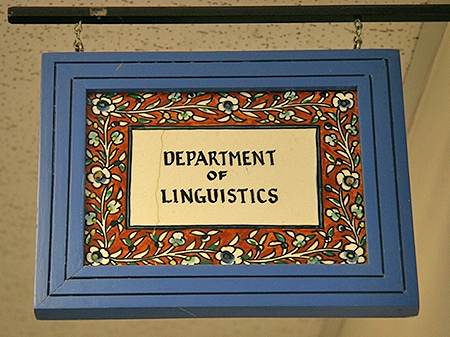
Linguistics ETDs
Publication Date
Summer 6-4-2021
Abstract
Previous work on language change in contact situations has treated lexical borrowing and grammatical borrowing as discrete phenomena (Appel and Muysken 1987, Thomason 2001, Campbell 2013). Claims that lexical borrowing needs to occur before grammatical borrowing (e.g. Thomason and Kaufmann 1988) or that grammar can be borrowed without any lexicon (e.g. Aikhenvald 2002) are often mentioned in the literature. This dissertation explores the interplay between grammatical constructions (in the sense of Goldberg 2006) and lexical elements in intense contact situations. More specifically, it addresses the following research question: Are grammatical constructions borrowed independently from the elements contained in said constructions? To answer this question, the present research project analyzes the influence of Spanish on Paraguayan Guaraní, both languages spoken in South America, which have been in intense contact for five centuries.
The research question is addressed via three empirical studies using a 40-hour corpus of sociolinguistic interviews (Labov 2001). The first study focuses on the motivations to borrow verbs and the effects that the adopted elements have in the internal organization of the recipient language (see, for instance, Haspelmath 2009). The main finding of this study is that loan verbs coexist with their native-origin counterparts in part because they occur in different grammatical constructions. The second study explores differential object marking, and the factors that favor the occurrence of -pe, a human direct object marker. Results show that younger, more Spanish-dominant speakers, have a higher usage rate of the feature, and that -pe suffixes to loans more frequently than to native-origin nouns. The third study compares the behavior of the polysemous verbal prefix je- among loan verbs and among native-origin verbs. It was found that the primary function of je- is as middle-marker (MM). Even more striking is that more than half of the hosts are loan verbs, and only a quarter of je-prefixed verbs are of native-origin.
Results from the DOM and MM studies suggest that the Guaraní locative postposition -pe and the reflexive marker je- underwent contact-induced grammaticalization (Heine and Kuteva 2003) to become an object marker (LOC > DOM) and a middle marker (REFL > MID), respectively. Both grammaticalization processes were triggered by loans, which entered the language as parts of larger constructions: in the case of –pe, of the [Verb + DOM + HumanOBJ] construction; and in the case of je-, of the [Middle Marker + Verb + Oblique] construction. These borrowed constructions, whose slots were initially favored by loans, became more productive and started recruiting native-origin elements.
In sum, the studies show that lexical and grammatical borrowing are not discrete phenomena. The overall findings support the hypothesis that changes occur in constructions (Bybee 2015), that terms that are frequently used together in the donor language (constructions) will be borrowed together by the recipient language (Backus 2013), and that grammatical replication originates in everyday communication (Heine and Kuteva 2010). Finally, this dissertation also contributes to expanding our methods to examine contact phenomena involving a major colonial language and a language of indigenous origin.
Language
English
Keywords
loan verbs, grammatical borrowing, DOM, middle voice, Guaraní, Spanish
Document Type
Dissertation
Degree Name
Linguistics
Level of Degree
Doctoral
Department Name
Department of Linguistics
First Committee Member (Chair)
Rosa Vallejos
Second Committee Member
Naomi Shin
Third Committee Member
Jill Morford
Fourth Committee Member
Maura Velázquez-Castillo
Recommended Citation
Bittar Prieto, Josefina. "Spanish-Origin Verbal and Grammatical Borrowing in Paraguayan Guaraní." (2021). https://digitalrepository.unm.edu/ling_etds/73
